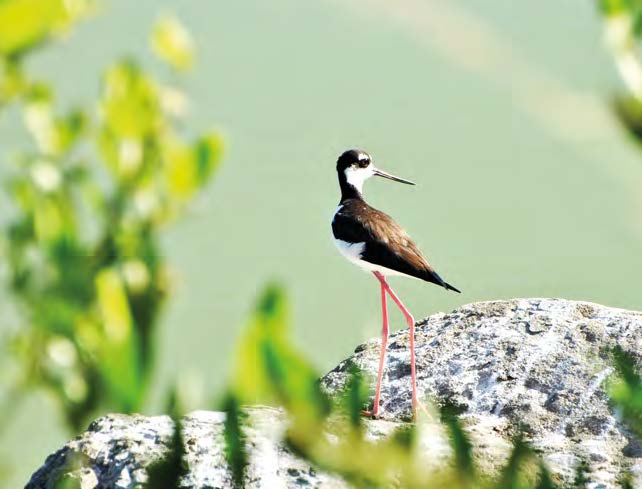According to a study by the US Fish and Wildlife Service, amateur bird watchers brought 36 billion dollars to the American economy in 2006, and 20% of Americans identify as bird watchers. At the same time, the Kuşcenneti National Park in Turkey— a Ramsar site like Saint Martin—attracts amateur bird watchers from around the world. Thus represents direct and indirect revenue of more than $1million per year. Guided visits have become a major activity, with no less than 127 businesses offering visits around the globe. Knowing that the avifauna counted on the ponds of Saint Martin comprises more than 85 species of birds, this abundance and this richness have naturally encouraged the Réserve Naturelle and the Conservatoire du Littoral to promote the conservation of these species and their habitats, by way of development adapted at for public access at each site. The idea, in the absence of a tourism strategy other beach-oriented in Saint Martin, is to propose the development of eco-tourism based on bird watching, for which Saint Martin has perhaps the best potential for all of the Caribbean. For this to develop, it is necessary in parallel to expand the protection of coastal zones by developing them for properly for human activities. In the post-Irma context, at which time everyone agrees it is necessary to rethink our model for the development of coastal areas in Saint Martin, other than for their heritage value, the increase of eco-tourism in Saint Martin could be the answer. The Réserve estimates that a budget of 1.6 million euros is needed for the renewal of the salt ponds.
Bird Watching: A Rich Potential For Saint Martin
Èchasse d’Amérique Black-necked stilt © Julien Chalifour
The salt ponds of Saint Martin, an important buffer zone between the shore and the sea, are too often still thought of as unhealthy places. Their negative image, combined with development issues facilitating their destruction, is partially the reason for their disastrous evolution. The overall coastal zones in Saint Martin were impacted by the violence of the winds brought by hurricane Irma. The mangroves are practically destroyed, the vegetation along the shores disappeared, ripped up by the strong gusts. The impact on the biodiversity for marine and terrestrial fauna is difficult to quantify, but it is certain that the disappearance of these habitats and ecosystems will have a lasting impact in the short, middle, and long term on the global stock and production of animal and vegetable biodiversity. Actions taken for the renewal of the biodiversity for coastal zones will allow to minimize such impacts and to lessen the effect on the biodiversity in a general manner in the future.

















